SOS (Safe Operating Stop)
SOS description for drive option Functional Safety 3.
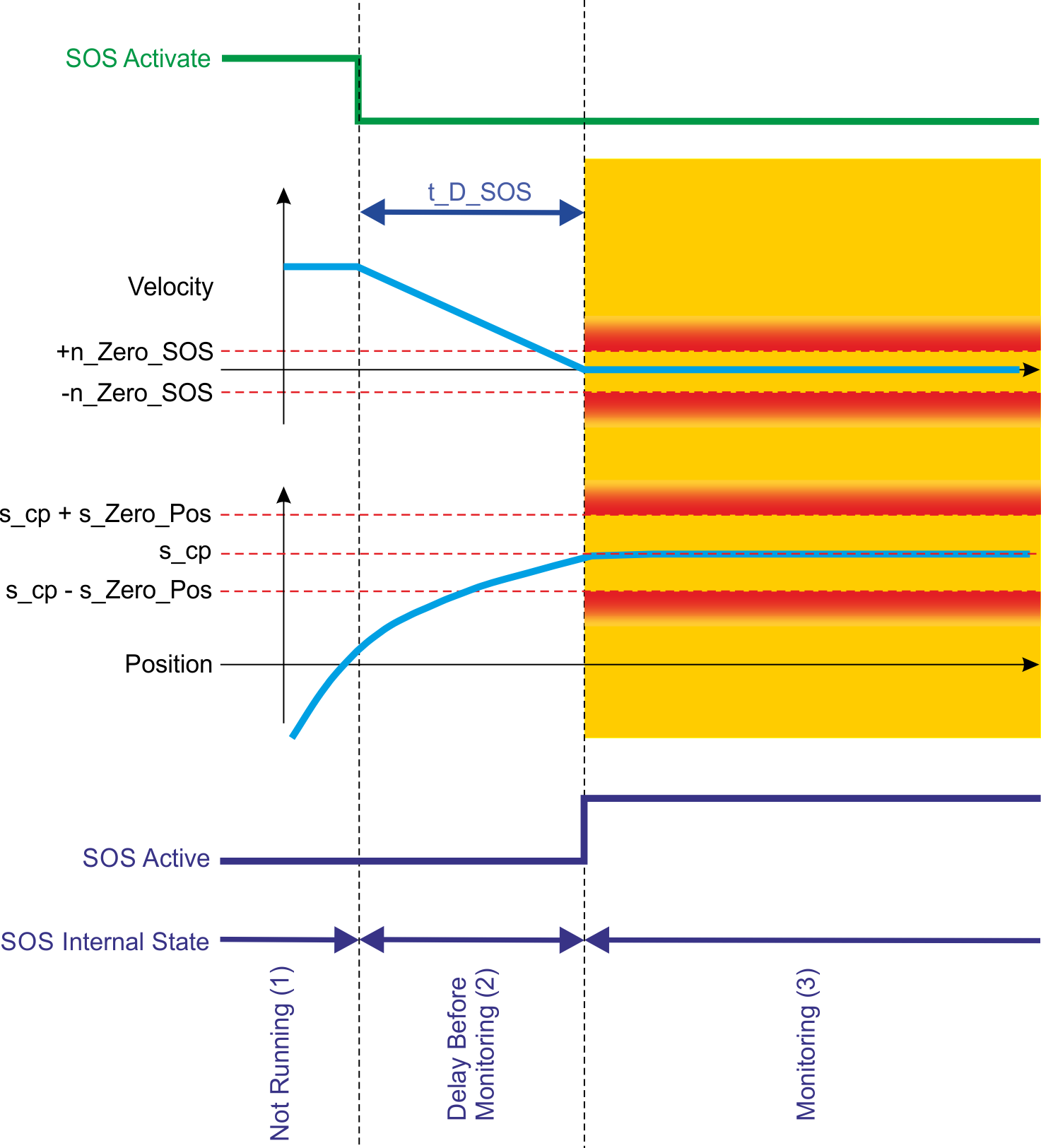
Description
SOS monitors the position of the axis and ensures that it stays in a position window. The position of this window is defined when the monitoring starts. The upper and the lower limit of the position window are defined by the parameter s_Zero_SOS. If the position leaves the position window, the fault reaction STO will be activated.
Optionally, the velocity can be monitored to ensure that it stays in a window defined by the parameter n_Zero_SOS. The start of the position/velocity monitoring can be delayed by using the parameter t_D_SOS. This delay gives the axis the necessary time to stop.
SOS can be activated by a safe input and/or FSoE and/or the SS2 function. The SS2 function, when used, will detect whether the velocity is low enough to activate SOS by means of the parameter n_Zero_SOS. This is why it is important to set a correct value to n_Zero_SOS. A value of 0 will most likely lead to a SS2 failure so that SS2 will activate its fault reaction.
Number of Instances
One instance per axis for SMM1.
Two instances per axis
Function Input / Output Variables
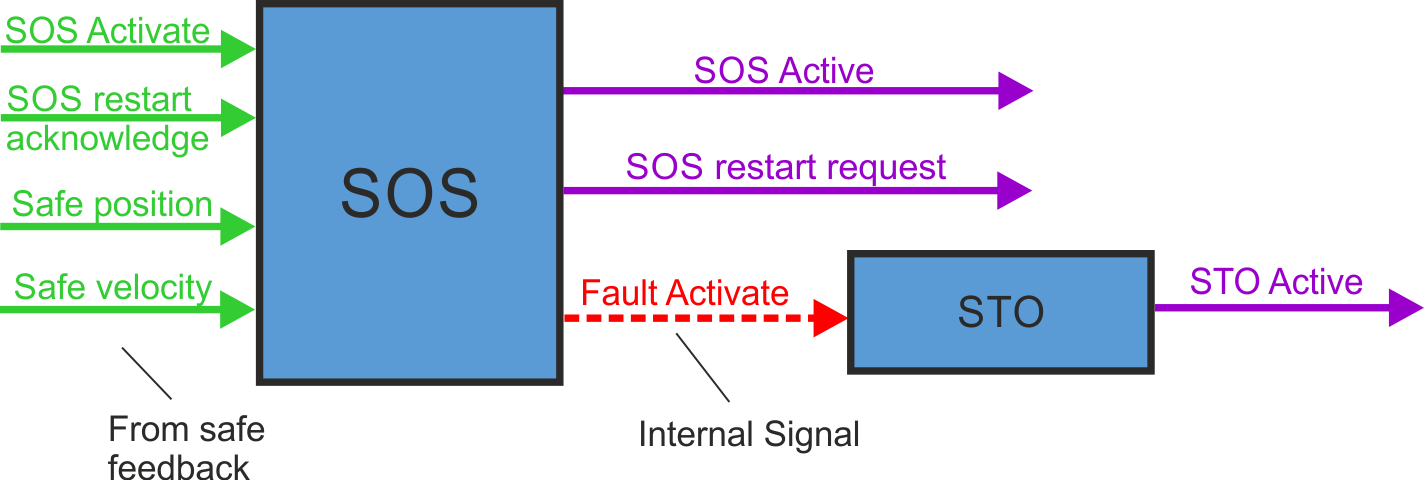
Inputs
- SOS Activate can be triggered by
- FSoE,
- safe digital inputs (must be mapped) or
- the SS2 function.
- Safe position: signal from safe feedback
- Safe velocity: velocity signal derived from safe feedback position
- SOS Restart Acknowledge is used for manual restart. The signal can be triggered by
- FSoE or
- safe digital inputs (must be mapped).
Outputs
- SOS Active: logical status of the SOS function
- Fault Activate: activate STO fault reaction
- SOS Restart Request: request for manual restart.
Activation
|
Activation by FSoE |
|
|
Activation by safe digital inputs |
|
Restart
Restart can be set as "automatic" or "manual".
|
Automatic restart |
SOS will be deactivated automatically |
|
Manual restart |
To deactivate SOS, send a safe restart request to the safety control by using FSoE or safe input |
For further information see State Diagram State Diagram.
Related Parameters
Safety parameters
|
Name |
Variables |
Default |
Parameter |
|---|---|---|---|
|
Function Activation |
- |
0 (Never active) |
|
|
Safe Input |
- |
0 (Not used) |
|
|
FSoE |
- |
0 (Not used) |
|
|
Position Zero Window |
s_Zero_SOS |
1 (Pos user units) |
AXIS#.SAFEPARAM.SOS.POSZEROWINDOW; usable value range depends on used encoder type, see (➜ # 1, Limitations for SMM R_02-07-000) |
|
Velocity Monitoring |
- |
0 (Disabled) |
|
|
Velocity Zero Window |
n_Zero_SOS |
0 (Vel user units) |
|
|
Time Delay Monitoring |
t_D_SOS |
1 ms |
|
|
Restart Acknowledge Bevaviour |
- |
0 (Automatic restart) |
|
|
Restart Acknowledge Source |
- |
0 (Not used) |
Diagnostic parameters
| Diagnostic parameters |
Variables |
Default |
Parameter |
|---|---|---|---|
|
Function Active Status |
- |
- |
|
|
Function Internal Status |
- |
- |
Timing
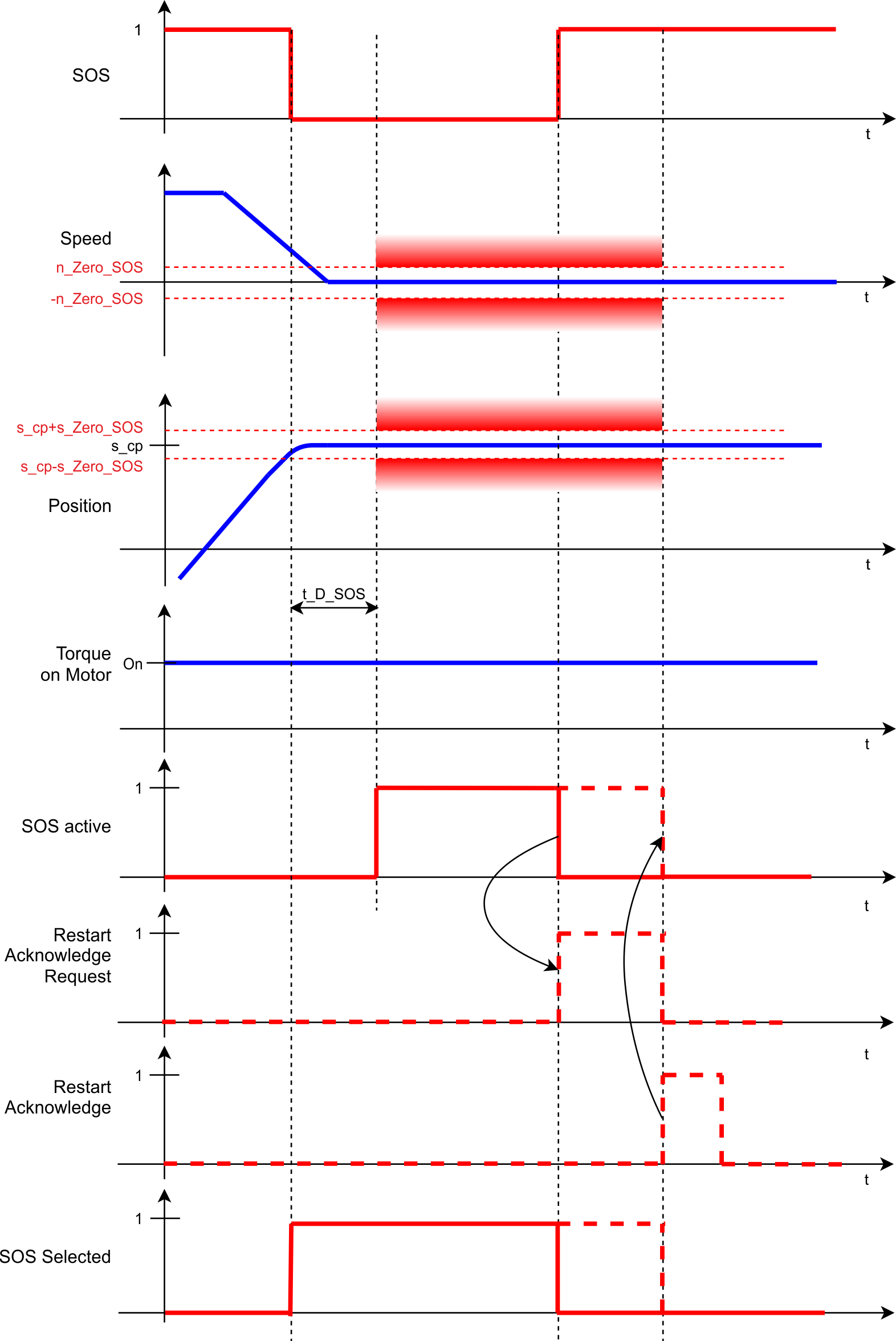
State Diagram
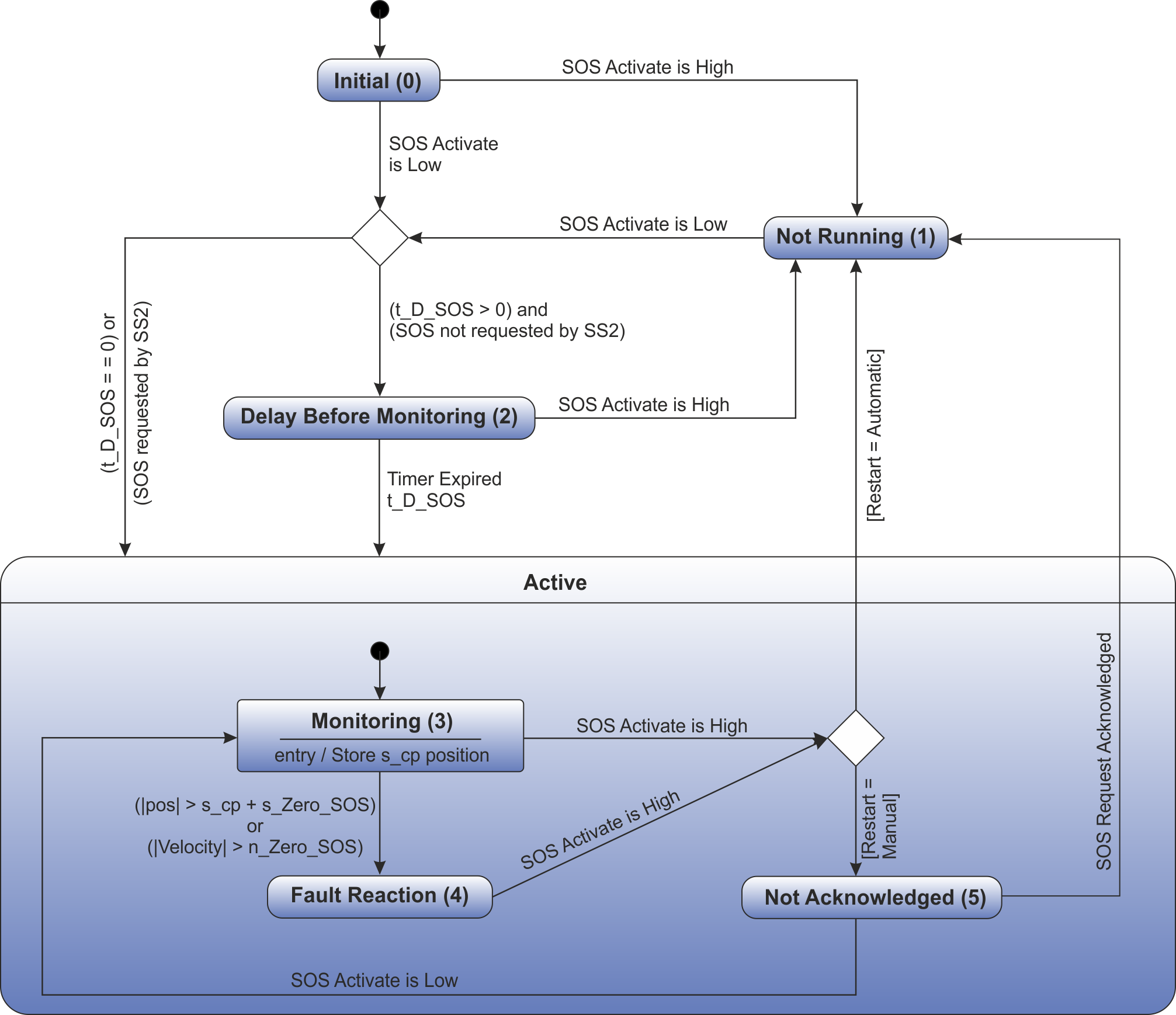
SOS is active when its internal state is in the "Active" composite state "Monitoring (3)" or "Not Acknowledged (5)" or "Fault Reaction (4)".
Setup in WorkBench
Select the drive and open the Safety Parameterization view (see "Parameters Editor").
Choose the axis (1), category (2), SOS function (3) and the instance number (4).
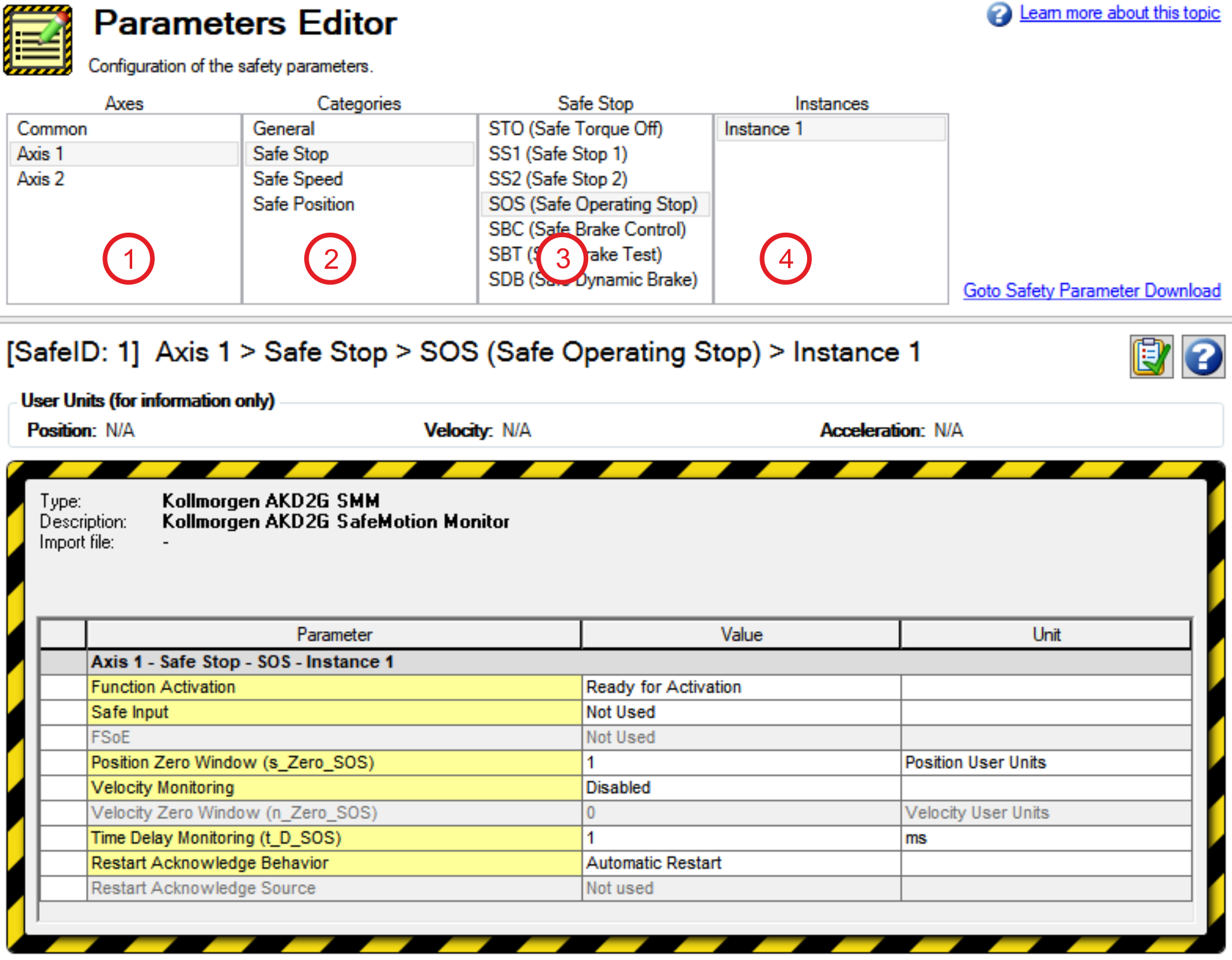
Fault Reaction / Failure Messages
The fault reaction of the SOS function is STO.
Safety State / Status Signals
The signal AXIS#.SAFE.SOS.ACTIVE AXIS#.SAFE.SOS_x.ACTIVE can be monitored by safe digital outputs with OSSD pulses (see "OSSD"). The status signal must be mapped to the safe digital output. Two outputs can be combined to a dual channel output. For parameter description refer to Functional Safety Parameter Reference.
Safety Properties
Refer to (➜ # 1, Safety Properties Overview).
















